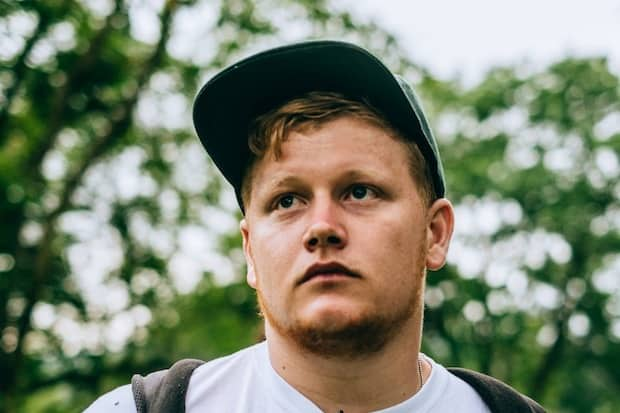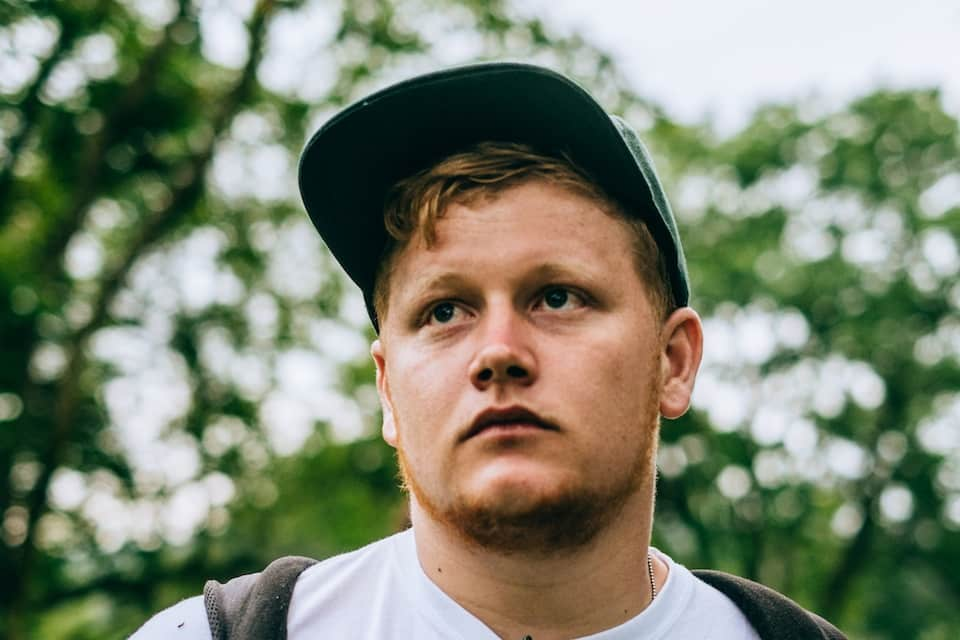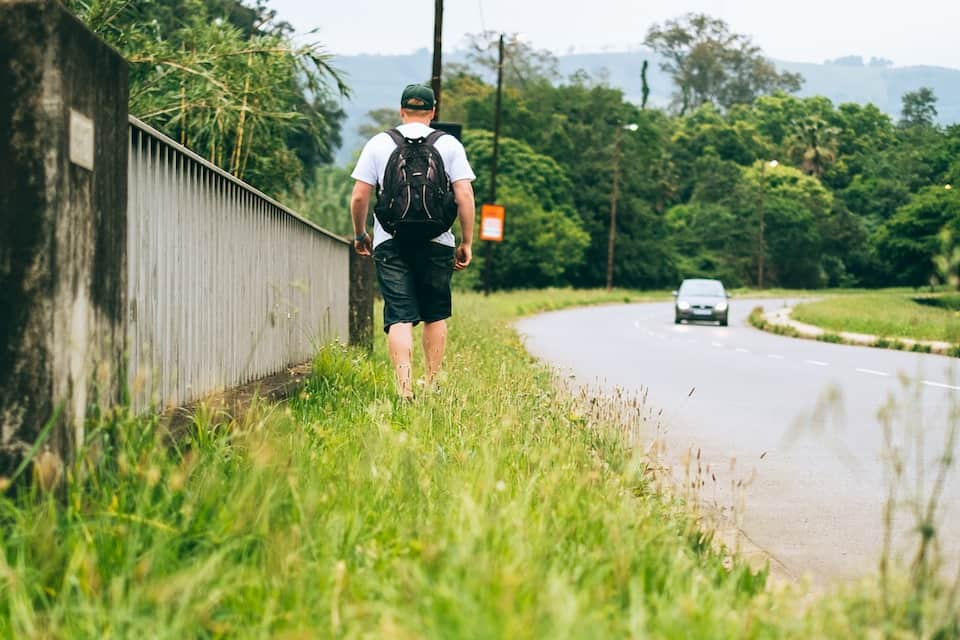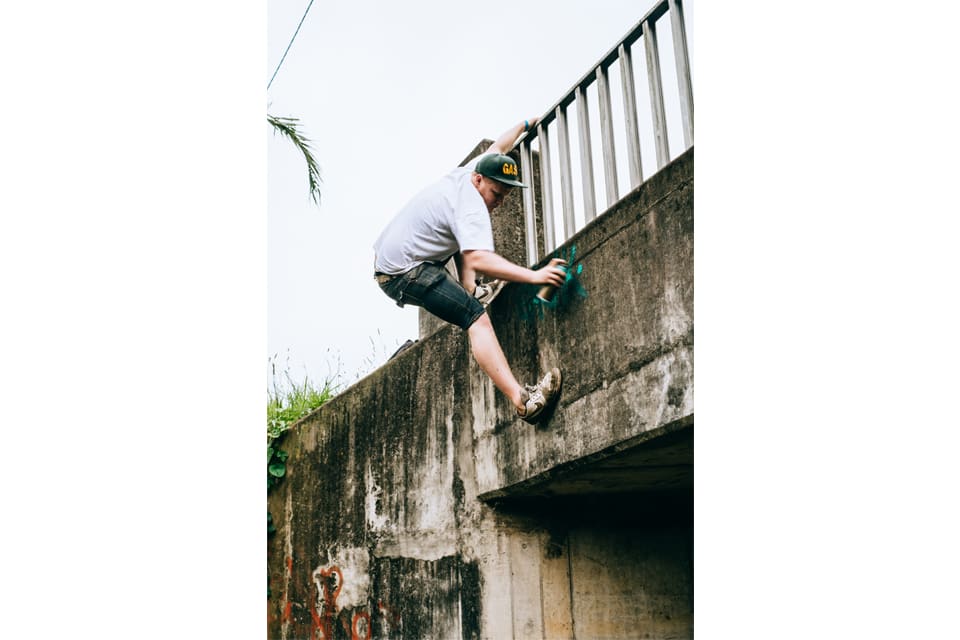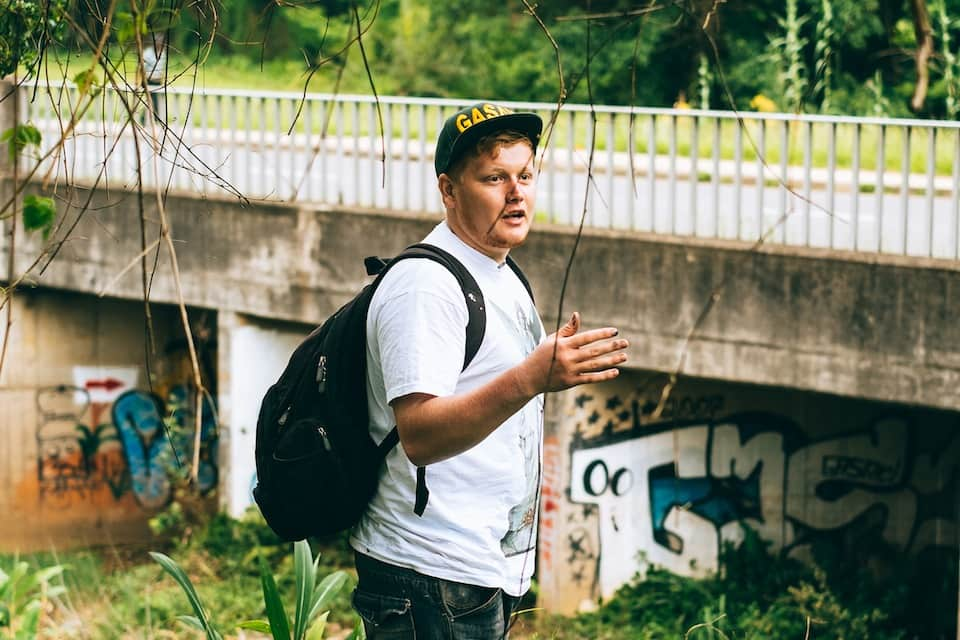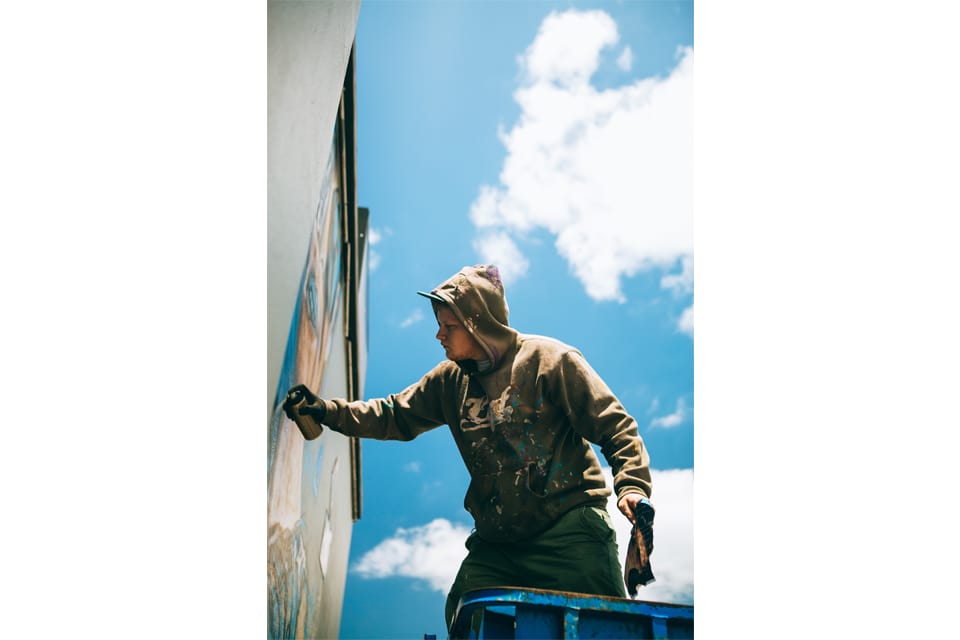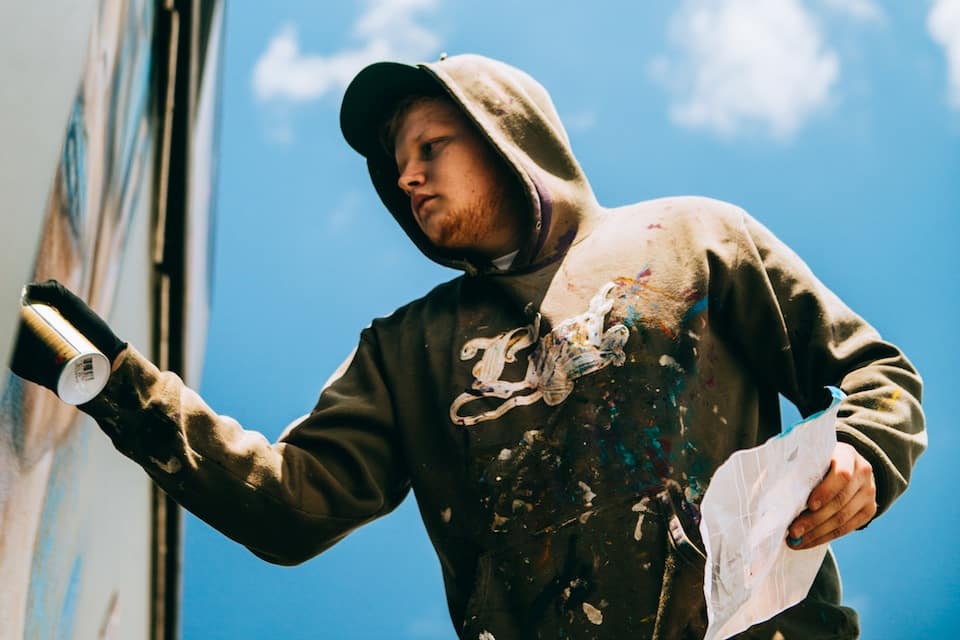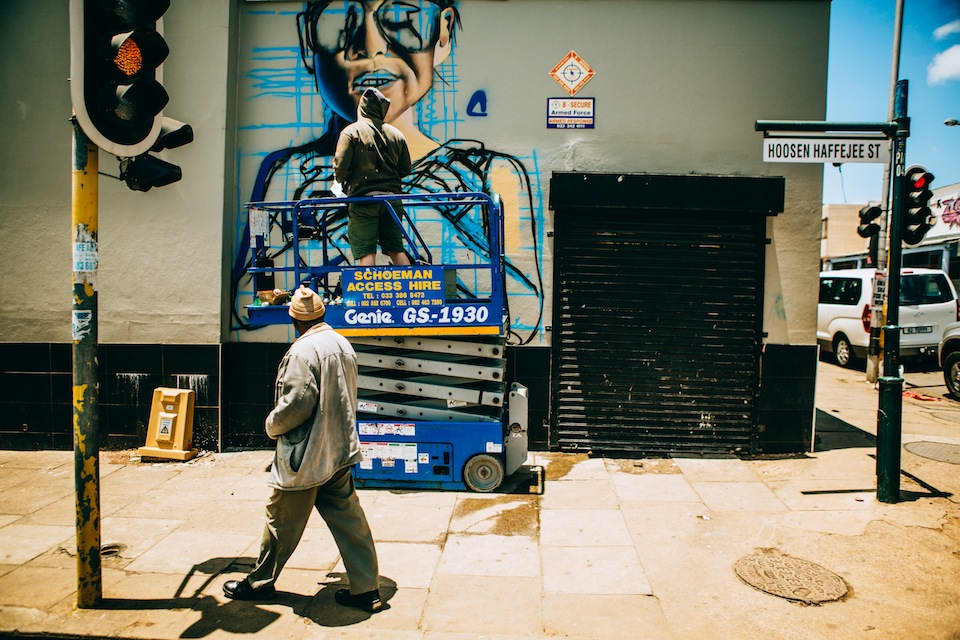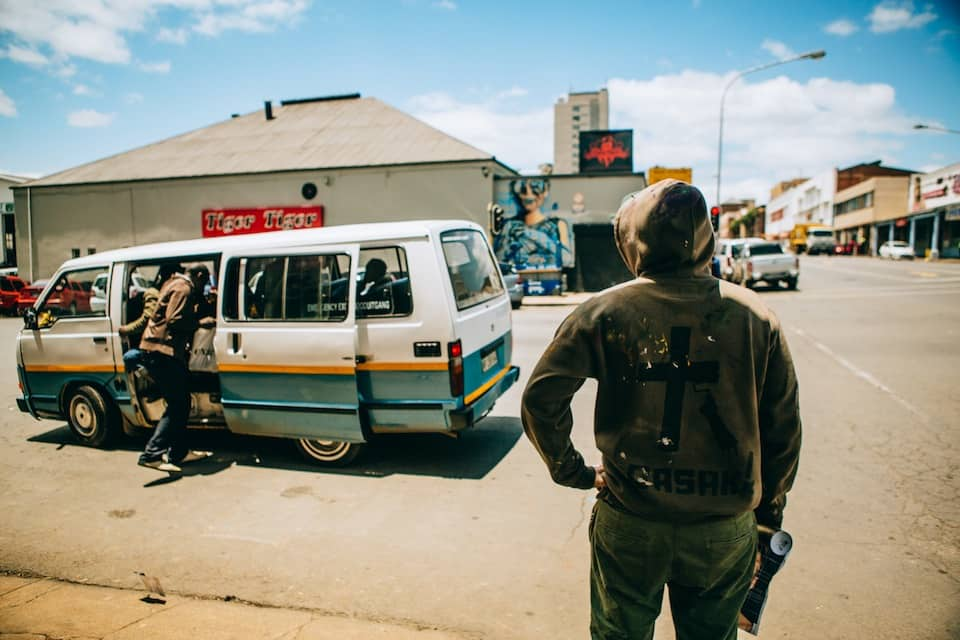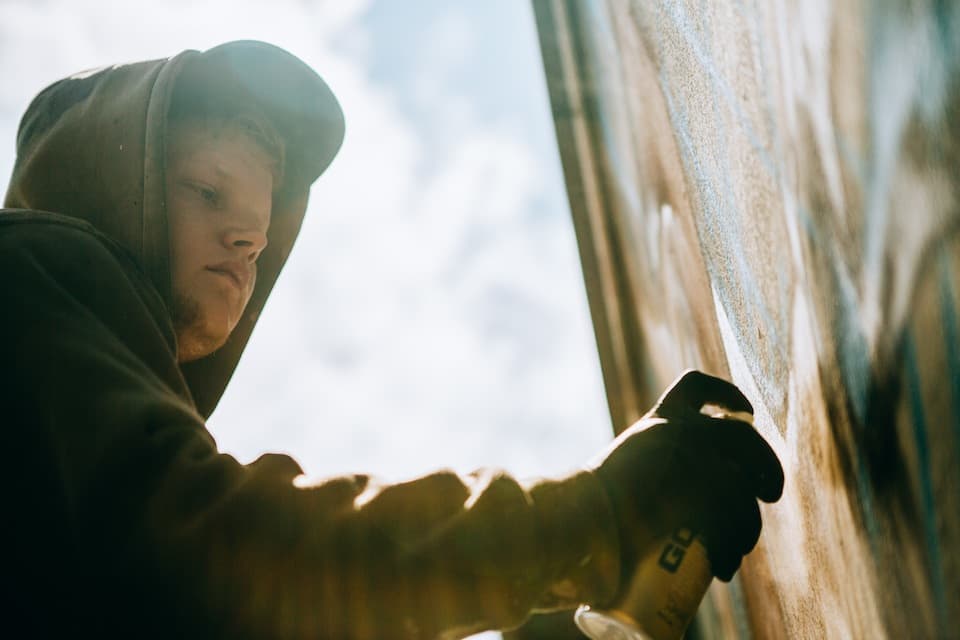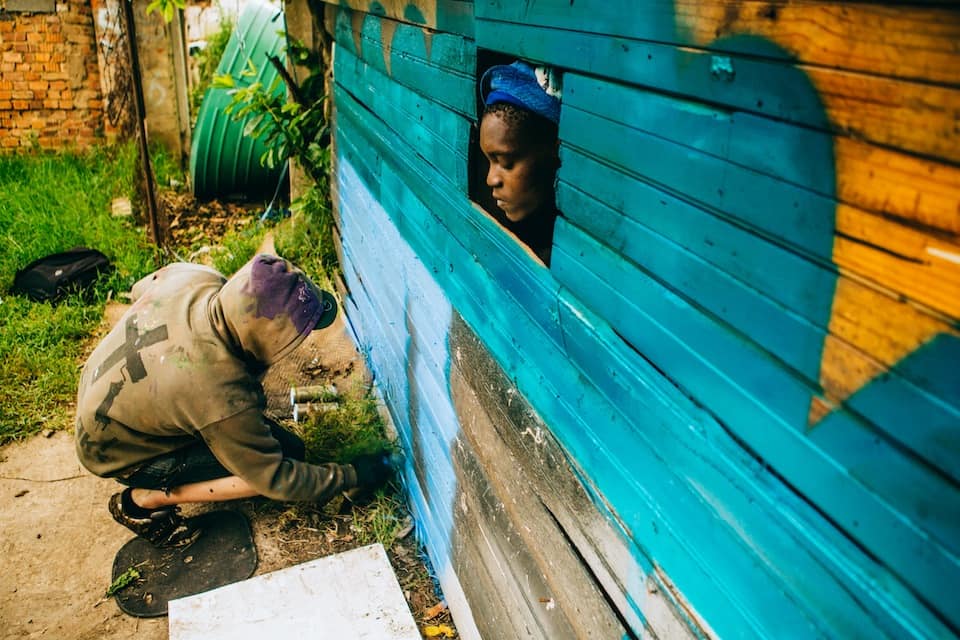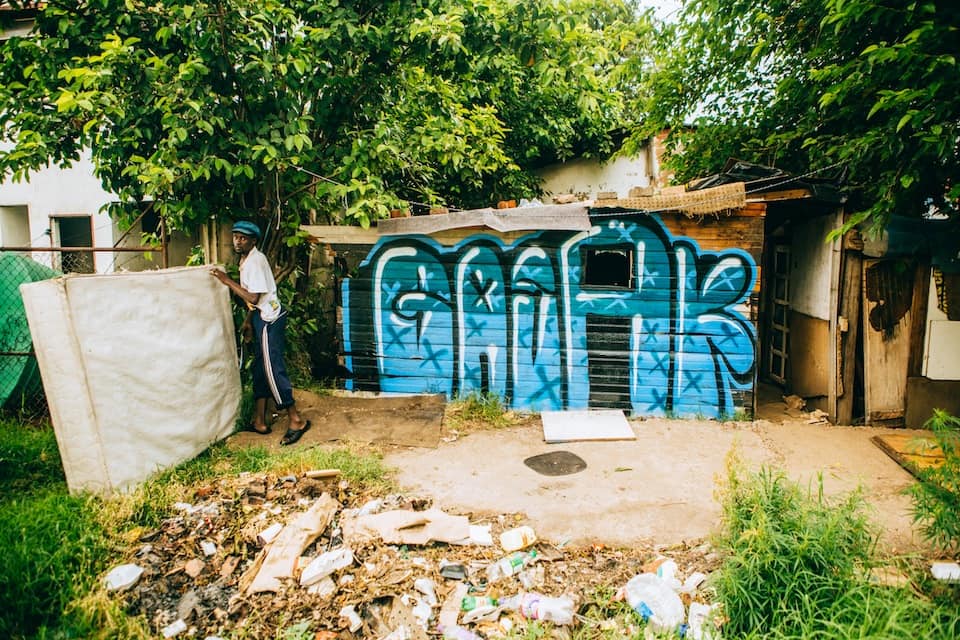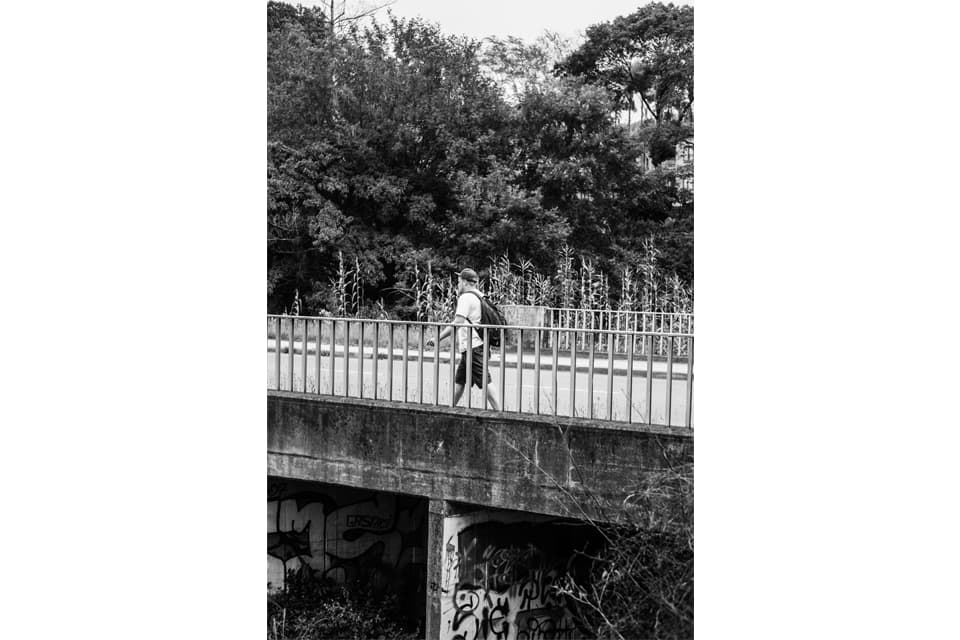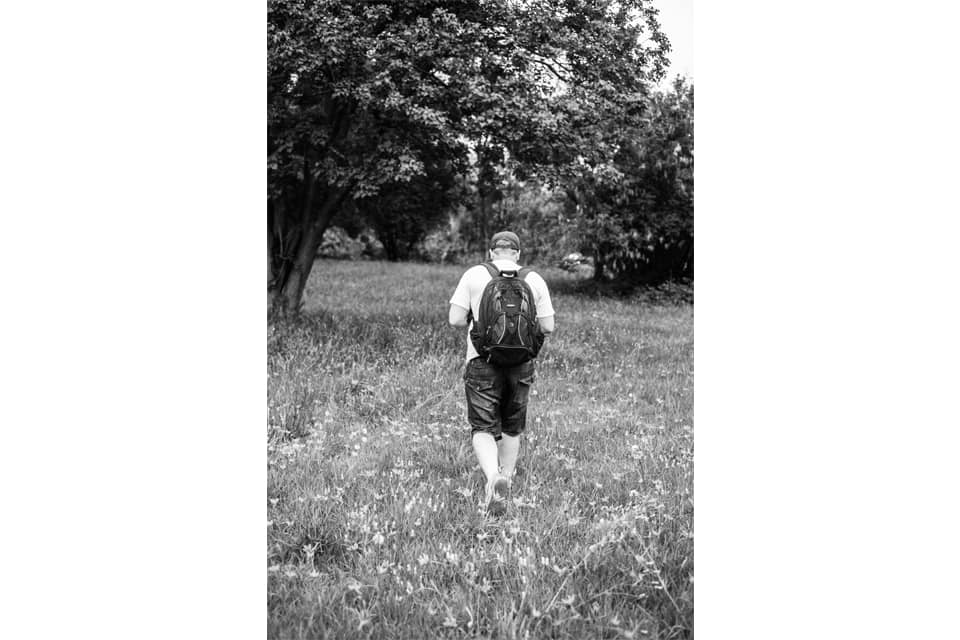Presented by Sprite and FADER, Obey You Collective: South Africa is a series devoted to showcasing artists, trail-blazers, and bright young talents from South Africa. For this installment, we spoke with a 23-year-old graffiti artist from Pietermaritzburg named Gasak.
When you visit Gasak's website, music begins to play automatically. More specifically, you'll hear "African Sky Blue," a 1981 track by Juluka, an interracial duo who illegally recorded and performed genre-melding music in apartheid-era South Africa. It's a pretty song, one that synthesized slick Western pop-rock with African grooves five years before Graceland was ever released. The lyrics are patriotic and ideologically-loaded but never alienating. The production is crisp and sunny. It reminds me a lot of Gasak's paintings, which are a mix of vivid photorealism, political satire, and more classic, bubble-style graffiti work. What can I hope? What can I dream? What will the future bring? the song wonders, and I can pretty easily imagine Gasak wondering the same thing.
Though he's hesitant to call himself a loner ("I paint with other guys when I want to"), Gasak has never much cared what people thought of him. During high school in Pietermaritzburg, a quiet city 50 miles west of Durban, the impassioned graffiti artist was discouraged by nearly everyone in his life: schoolteachers, close friends, immediate family. "It wasn’t considered an art form," says Gasak of the skepticism he faced starting out. "It was just property damage." Now 23, he travels the world making bold, politically-charged street art —and proving everyone wrong in the process. When we speak over Skype from his one-bedroom apartment in Milan, where he currently lives, Gasak opens up about his recent projects, South Africa's evolving graffiti scene, and why the best art is often the most polarizing.
Can you tell me a little about your “Face The Peace” project? I’m going to visually attack the biggest criminal organization in the world. I’ll be painting four faces [of world peace leaders] in Juarez, Mexico and four faces in El Paso, Texas, and these eight faces will join up geographically over the border to form a heart. I thought about painting in different spots in South Africa, but then I did more research and I realized, why don’t I go and paint in the heart of where the drug war is? I want to bring as much awareness as I can to this project. I’ve been warned by many people that I could get a bullet to my head.
How did you end up studying in Italy? In 2012, at the end of our school year, the government closed down our college. I couldn’t study in South Africa because I didn't have my qualifications of high school, so I had to go overseas, and they offered a cheaper course for the students from South Africa to study in Milan. That same year, I got a scholarship because of my art.
But you never graduated from high school? I was going through a stage where I felt very voiceless and a lot of the teachers and a lot of my friends didn’t like my art very much. I believed that graffiti could get me somewhere in life because I was so inspired by everything around me. When it came to my main exams for matriculation, the headmaster called me into his office to say that I was not going to get anywhere in [South Africa] because I was doing an art form that wasn’t really appreciated by society. I went into my final matric exam for English, and I drew him a picture of my graffiti, and below it I wrote my quote, “be inspired by what you love.” I walked out of the exam 30 minutes after that, which made me fail. It was a very proud moment.
Your work often has social and political implications. Where do you get your ideas? From stuff that irritates me, especially in politics. If I hear a politician stand up on TV and express his views and I feel that he doesn’t stand for what I believe in, I will sit down and plan something. Most of my political artwork is South African, such as my visual attack on Julius Malema, who is quite a stupid politician. He wants to nationalize the mines in South Africa and try and give all the money to poor people, which won’t happen because he’ll take most of it; he’s a criminal and all he wants is money. I planned to paint a portrait of him in a scrapyard. The location of the piece is very, very important. If he had to nationalize the mines in South Africa that’s exactly where South Africa would go — it would become like a scrapyard. The portrait of him was painted on a broken-down van, because he’s all talk and no action, standing on a pedestal 100,000 kilometers away from the situation.
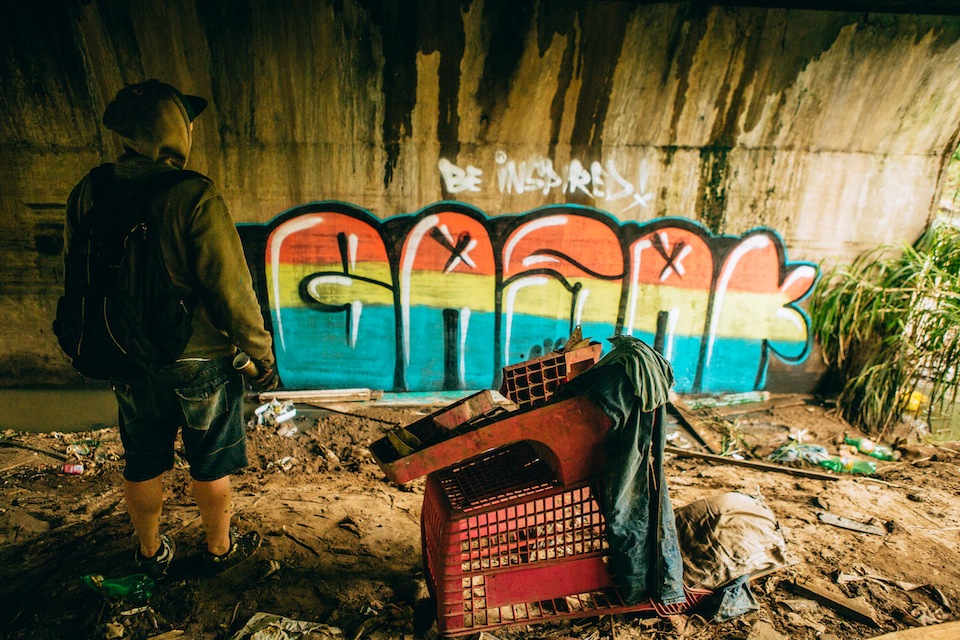
Is there an element of humor in your graffiti? Sometimes— it depends on the person that’s viewing the artwork. I was invited to UPFEST in Bristol, England, one of the biggest street art events in Europe. I painted the Queen with her finger up her nose; the visual pun [is that she’s] digging for diamonds, since I believe the Cullinan Diamond belongs in South Africa, as it was given to King Edward VII in 1907 as a birthday present. There was over 20,000 people that came through, and a lot people came up to me laughing and saying, “Well done,” because they thought it was so funny. A lot were pissed off by it, too. A lot of people wrote into the papers saying how bad I am, and that I’m like, pissing on the Queen’s Diamond Jubilee. Negative stuff doesn’t really get me down, because I’m all about everyone having their own opinion; if they can talk negatively and positively about it then the artwork has been successful.
What’s graffiti culture like in South Africa right now? There’s big things happening, especially in Cape Town — it’s the design capital of the world this year. But at the same time, there’s a lot of negative things going down. The municipalities are cracking down on graffiti and not allowing people to paint in public areas. We’ve got some guys, like Falko, trying to fight for the right to be able to paint in public spaces. Johannesburg is growing with its graffiti too, they have the City Of Gold every year, and Durban is growing as well. We try to keep up with Cape Town and Johannesburg, and I think some artists are. I think in Durban we have a lot of young artists; I don’t mix with them that much because I’m just doing my own thing.
Can you tell me about the original artwork you created for Obey You Collective: South Africa? The piece that I did for was of two professional basketball players; one guy was shooting for the hoop and the other guy was trying to stop it. There's a squatter camp, or mud huts, in the background. We’ve got such a high poverty rate — you’ve got to have a dream and you’ve got to try to accomplish it with what you have. Even if you come from the dirtiest place on Earth, you can still be good at something.
Have you always had enough money for paint and supplies? Is that like a joke or something? No, of course I haven’t. It’s been flipping hard. When I left school, I worked seven days a week as a barman. I mopped the floors for three months until they said, “Well there’s an extra space as a barman.” Things haven’t always been happy. I could paint when I had spare money. A lot of the time I’d try to create projects where I would give back to communities; I would try and raise funds and get sponsors. Sometimes I would be successful, and I’d have a few cans left over that I would keep. I would paint for a company and overcharge them for paint — they wouldn’t pay me properly anyway. It’s just hustling, really. It’s been hard, I won’t lie. Sometimes I don’t even have food, but I’ve always found painting more important than anything else.
